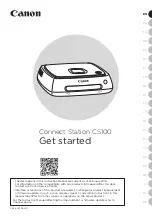
Refresh a er disconnec ng from computer
After DJI Copilot has been safely ejected from a computer and the cable is disconnected, you are prompted
to refresh by pushing DJI Copilot’s action button. Since DJI Copilot’s system was in power-saving mode
during the connection to the computer, it must wake up to update the status details for available storage and
battery charge.
DJI Copilot hard drive format
While the default storage format used by DJI Copilot (exFAT) is universal for Mac and Windows, you have
the potential for better transfer rates by changing it to one of the following:
macOS: HFS+ (Journaled)
Windows: NTFS
If you want to change the format, use the default utility for your operating system.
For further information, see the instructions for your operating system.
macOS
Windows
Par
oning DJI Copilot’s internal drive
In general, it’s recommended that you organize content on DJI Copilot’s internal drive using folders instead of
partitions. However, if you choose to partition the internal drive, make sure that at least one volume is
greater than 50% of the total 1.8TB storage capacity. DJI Copilot requires one volume that exceeds a
minimum 900GB of storage capacity.
Hub - SD card and USB Type A port
When DJI Copilot is connected to a computer via the USB-C port, it serves as a hub—this means that SD
cards and USB storage devices connected to DJI Copilot are available to your computer.
Mobile device connec on via USB-C
While it’s possible to connect Android and iOS mobile devices to DJI Pilot’s USB-C port, such connections
are non-standard and have not been tested. In addition, extended mobile device connections to the USB-C
port can quickly drain the charge from your mobile device’s battery or DJI Copilot.
Formatting deletes all data on the hard drive. Before you format the drive, copy everything on
DJI Copilot to another hard drive.
36
DJI COPILOT
5/4/18
















































